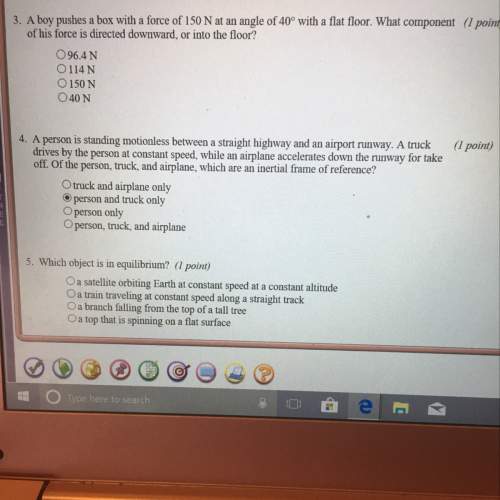NEED HELP WILL GIVE BRAINLIEST
Formulas:
Vx = (R)Cosθ
Vy = (R)Sinθ
<...

NEED HELP WILL GIVE BRAINLIEST
Formulas:
Vx = (R)Cosθ
Vy = (R)Sinθ
R2 = x2 + y2
TanΘ = y/x
Tan-1(y/x) = Θ
Problems:
1. What are the x and y components of a vector of magnitude 25m/s and a direction of 45 degrees?
2. What are the x and y components of a vector of magnitude 75N and a direction of 60 degrees?
3. What are the x and y components of a vector of magnitude 5m/s and a direction of 135 degrees?
4. What are the x and y components of a vector of magnitude 100N and a direction of 225 degrees?
5. What are the x and y components of a vector of magnitude 25m/s and a direction of 315 degrees?
6. A force of 50N at 90 degrees and a force of 50N at 0 degrees act on an object, what is the magnitude and direction of the resultant force?
7. A object travels with a velocity of 25m/s at 90 degrees and a velocity of 50m/s at 0 degrees, what is the magnitude and direction of the resultant velocity?
8. A force of 200N at 90 degrees and a force of 50N at 180 degrees act on an object, what is the magnitude and direction of the resultant force?
9. A force of 20N at 90 degrees and a force of 50N at 0 degrees act on an object, what is the magnitude and direction of the resultant force?
10. A object travels with a velocity of 100m/s at 90 degrees and a velocity of 25m/s at 180 degrees, what is the magnitude and direction of the resultant velocity?

Answers: 1


Other questions on the subject: Physics


Physics, 21.06.2019 23:00, yourgirlnevaeh
For general projectile motion, when the projectile is at the highest point of its trajectory, its acceleration is zero? a)the horizontal and vertical components of its velocity are zero. b) its velocity is perpendicular to the acceleration. c)the horizontal component of its velocity is zero. d)its velocity and acceleration are both zero.
Answers: 1

Physics, 22.06.2019 07:40, bellapimienta8
Which best describes how fluids change as they travel through different portions of the convection currents? they change to solids at the outer portion of the convection currents. they change to solids at the inner portion of the convection currents. they become more dense at the outer portion of the convection currents. they become more dense at the inner portion of the convection currents
Answers: 2
You know the right answer?
Questions in other subjects:

Mathematics, 26.03.2021 01:00



Chemistry, 26.03.2021 01:00

Mathematics, 26.03.2021 01:00

English, 26.03.2021 01:00


Mathematics, 26.03.2021 01:00





